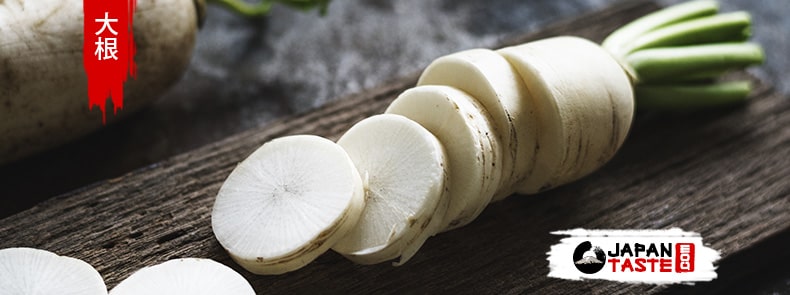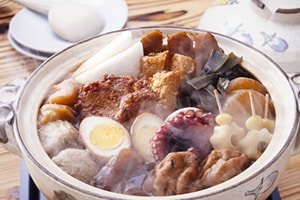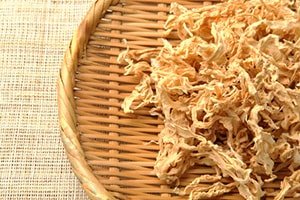You have probably already tasted daikon, finely cut and white, it is found as a garnish with sashimi in the restaurants of sushi in France. Do you really know this vegetable?
- Presentation of daikon, the radish widely consumed in Japan
- The different varieties :
- Japanese dishes using this vegetable :
Presentation of the daikon, the radish widely consumed in Japan
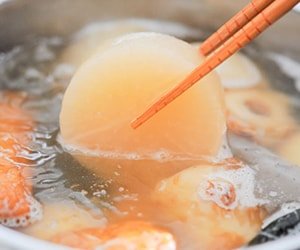 Daikon 大根 (literally “big root”) is a Japanese radish, cousin of black radish, longer, bigger and white but less pungent and fibrous than the latter. It is called white radish, long turnip or giant radish. In Japan it is eaten raw or cooked and is very appreciated because of its sweet taste and crunchy texture. It is eaten all year round but especially in winter. There are many different varieties and we will see here the most popular.
Daikon 大根 (literally “big root”) is a Japanese radish, cousin of black radish, longer, bigger and white but less pungent and fibrous than the latter. It is called white radish, long turnip or giant radish. In Japan it is eaten raw or cooked and is very appreciated because of its sweet taste and crunchy texture. It is eaten all year round but especially in winter. There are many different varieties and we will see here the most popular.
The different varieties :

Aokubi-daikon is the most common in Japan. This one is recognizable with its greenish tip. It is easy to grow, low in calories and rich in vitamin C and fiber, and is good for digestion. The sweetness of its taste and its firmness make it one of the favorite vegetables of the Japanese, this one is cultivated all year long. It measures about 20 to 35 cm long and 5 to 10 cm in diameter. Note that the green part of the daikon is softer while the white part is more pungent.
For the anecdote, aokubi-daikon or daikon-kun is the name of a manga character in the shape of daikon
with a green head, small legs and arms. It is very famous in Japan, there are many derivatives, plush, figurines, icons Line ect… I personally find him too cute and makes me laugh every time. Nowadays, the manga in 2 volumes is only available in Japanese.  Sakurajima-daikon is round and much thicker. This one is cultivated in Kagoshima in Japan and its size is very impressive, it can reach 50cm in diameter and 45kg! This one is often used in stews.
Sakurajima-daikon is round and much thicker. This one is cultivated in Kagoshima in Japan and its size is very impressive, it can reach 50cm in diameter and 45kg! This one is often used in stews.
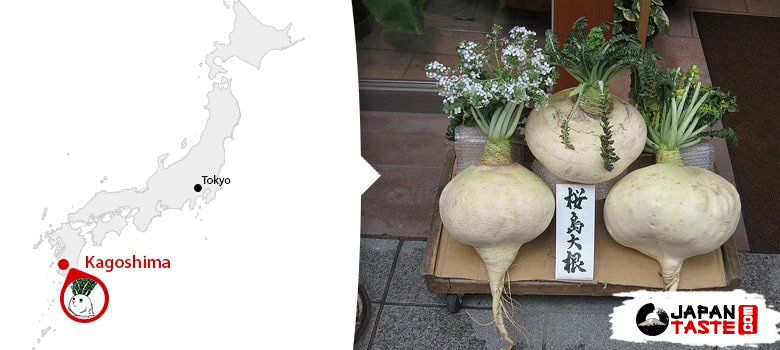
Moriguchi-daikon is the longest radish in the world, between 1m and 2m. This one is much thinner. It is macerated for a long time in the dregs of sake to make kasuzuke (brine)
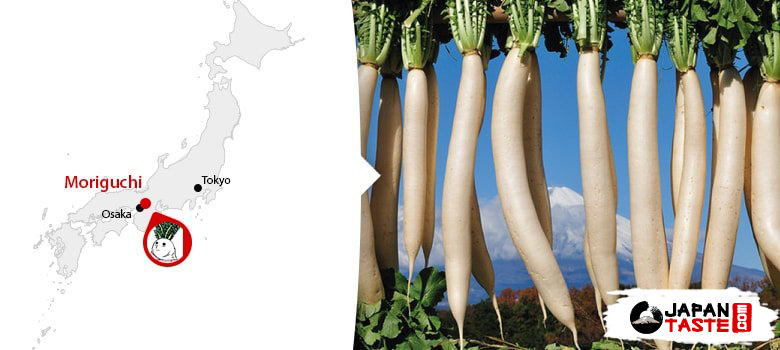
Japanese dishes using this vegetable:
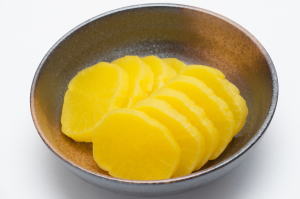 In Japanese cuisine, many types of pickles are made with daikon, such as takuan and bettarazuke. They are often accompanied in bento and eaten at the end of a meal to help digestion. Takuan is often artificially colored yellow.
In Japanese cuisine, many types of pickles are made with daikon, such as takuan and bettarazuke. They are often accompanied in bento and eaten at the end of a meal to help digestion. Takuan is often artificially colored yellow.
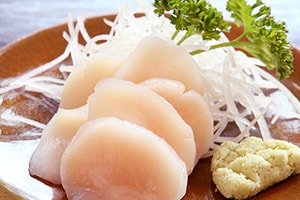 Raw and grated, daikon often accompanies sashimi (thin slices of raw fish) and is also used in salads. Daikon sprouts also serve as a side dish and are very nice.
Raw and grated, daikon often accompanies sashimi (thin slices of raw fish) and is also used in salads. Daikon sprouts also serve as a side dish and are very nice.
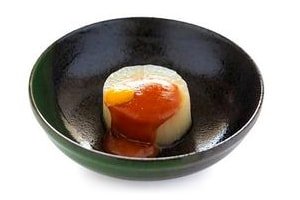 In winter, Furofuki-daikon is a typical winter dish in Japan. The daikon is sliced and covered with neri miso, a sauce made with miso
In winter, Furofuki-daikon is a typical winter dish in Japan. The daikon is sliced and covered with neri miso, a sauce made with miso
Daikon is a very healthy radish, low in calories, diuretic, aids digestion and helps eliminate fat. You can find it fresh or frozen in some Asian grocery stores, but also dried or in jars in organic stores or in the health food section of your supermarket, under the name of dried turnip. Moreover, it is very good so we will not deprive ourselves of it!


